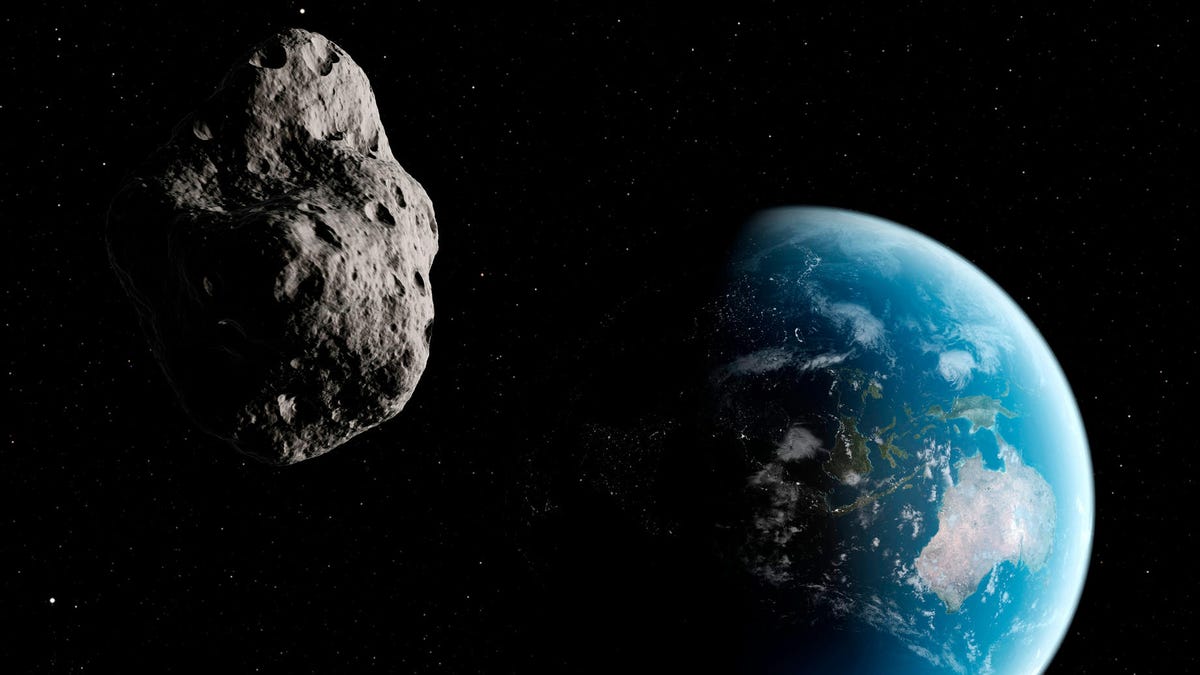The riskiest asteroid was recently discovered, but don't duck and cover just yet
Don't worry: Even the riskiest known space rock isn't a big risk.

The riskiest asteroid out there is among the most recently discovered.
There's a steady supply of tabloid headlines about giant asteroids "skimming" Earth or barely missing our planet. Most of these misleading stories actually involve space rocks safely passing by Earth at a distance of hundreds of thousands, or millions, of miles. Meanwhile, one asteroid that astronomers actually do consider the highest risk of all was discovered earlier this year, and I haven't seen a single headline about it.
The European Space Agency maintains a "risk list" of near-Earth objects that have a non-zero chance of hitting the planet. Often new asteroids are discovered and briefly placed on this list until further observations help scientists refine the object's path and rule out any possibility of impact.
However, this year two asteroids were spotted for the first time and remain on the list even after dozens of follow-on observations. In fact, asteroid 2021 QM1, which was first observed in August, remains at the top of the risk list.
Before anyone begins to panic, right now there are no objects on the risk list worth losing any sleep over. All 1,302 objects on the list, including 2021 QM1, have a rating of zero on the Torino scale, which is used to categorize potential Earth impact events. An object with a zero rating is considered "No Hazard -- The likelihood of a collision is zero, or is so low as to be effectively zero."
For 2021 QM1, its specific impact probability is one in 3,322 that it'll collide with Earth on April 2, 2052. Put another way, there's a better than 99.9 percent chance it doesn't hit us. And even if it did, the chances are still pretty good it wouldn't do much damage.
At about 164 feet (50 meters) in diameter, asteroid 2021 QM1 is about the same size as the bolide that unexpectedly exploded on entering the atmosphere over Russia in 2013. That air burst blew out thousands of windows on the ground, causing minor injuries, but there was no major damage. It's more likely that the next time an asteroid sneaks up on us like that it'll enter over the ocean somewhere without incident.
As for the other newly discovered asteroid on the risk list, it's named 2021 GX9, is even smaller than 2021 QM1, and has a one-in-14,534 chance of hitting Earth on April 16, 2032. It's ranked number five overall on the list.
This is all important data to keep in mind next time you read a click-bait headline about some scary asteroid heading our way. Remember everything on the official risk list is officially not a hazard.
Those headlines misunderstand or misrepresent what makes an asteroid "potentially hazardous," which is a label given to any asteroid that's above a certain size and that passes within a certain distance of Earth. There's no actual evaluation of the risk to Earth in the equation, and many of the asteroids considered potentially hazardous remain further from us than the moon at all times.
Where real reason for concern exists is in the few blind spots we still have. At the moment, our capability to scan the sky for unseen asteroids isn't great from the southern hemisphere, and we also have a hard time spotting objects that come at us from the direction of the sun. That's how the 2013 Russian bolide snuck up on us. NASA is currently planning to launch a new space observatory to help address the problem.
Until then, it's worth staying alert when it comes to the near-Earth space environment, but it's not worth staying up all night worrying.

